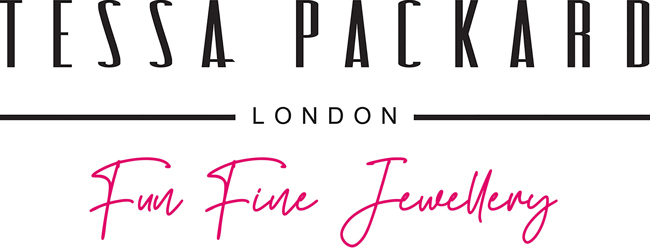
January 2019
Peter Petrou
Peter Petrou is one of the world’s foremost dealers in antiquities, curiosities and collectables. Intrigued by anything and everything, his inventory juxtaposes works of art, furniture and sculpture from many ancient cultures and long-past periods in history with new and dynamic designers of the 20th and 21st Century.
A passion – and arguably obsession – that started as a child with antique bound books quickly saw Peter become a notorious tour de force on the collecting scene by the late 1970s. Over the following two decades Peter and his wife, Leonora, became a firm fixture on London’s burgeoning art fair scene, where they came to establish a reputation for their much heralded and prize-winning displays at Grosvenor House, Masterpiece and most recently PAD London.
Buying only what they love visually, they have always maintained that the commercial aspect has never been important and will always remain secondary to their appreciation for human history and ingenious curation.
IN CONVERSATION
Tessa Packard [TP]: Which 3 museums do you most admire for their intellectual and inspirational approach to collecting objects and displaying collections? And in the world of make believe, which one of these top 3 would you most like to be the Director of should the post ever be offered to you.
Peter Petrou [PP]: To my mind the Museum of Fine Arts in Boston is the most inspirational. I would like to be the Director as they have the funds to expand their collections and are active buyers in all fields. I could go and buy lots of great stuff for the museum, through all the fields. Exciting or what!
The second is the Rijksmuseum in Amsterdam because of their extensive cross cultural collections. Where cultures collide is one of my main interests.
The third is the Pitt Rivers Museum in Oxford.
[TP]: If time and money were no object, what would a ‘Peter Petrou’ designed Museum look like? What style would it be architecturally? What country or in which landscape would it be located? Would the museum focus on a certain type of object? Or pieces from a certain country? Would there be a restaurant located within it, or perhaps a cocktail bar or gallery space for art classes?
[PP]: It would be a museum that was a modern day KunstKammer in London, my home city. From Palaeolithic stone tools to space suits, it would explore the history of man and his achievements through art and technology. No smudges (paintings). It would be an extension of what I do now but on speed. It would have good food but nothing fancy.
[TP]: If you could travel back in time to live amongst one ancient civilisation which one would it be and what indigenous or native object would you most like to bring back from that trip?
[PP]: Being Greek I would like to have been in Ancient Athens, the cradle of western civilisation and democracy. But ideally not as a slave. I would like one of the very first voting tally sticks, an ancient ballot paper.
[TP]: In your opinion, what has been the rarest artefact, object or curiosity to have passed through your hands in the many years you have enjoyed collecting?
[PP]: I suppose the curious object was an ancient Egyptian mummified hand in a 16th Century steel casket, which contained an inverted satanic cross once owned by Aleister Crowley, the infamous British Satanist. I was glad it sold quickly to one of the crazy Rock and Roll crowd. It gave off bad vibes.
[TP]: When stumbling across a new curiosity for sale, do you immediately know if you would like to buy it or is the decision always made over some time? How much does market forces influence your decision versus pure instinct and personal taste?
[PP]: I know instantly if I am going buy something. No hesitation, no regrets. Even if it takes an age to sell, I don’t care.
[TP]: Which three artisans, designers or artists of the last 100 years do you most identify with or hold in high regard (they can still be living)?
[PP]: We have a collection by the British modernist furniture designer Gerald Summers. Unknown and unrecognised by the general public, a friend of mine at the V&A Museum said of his work “You either get it or you don’t”.
I also love Jenny Saville’s paintings but unfortunately I can’t afford to buy her work.
Third would be the ceramicist James Tower.
[TP]: In your opinion what is the one thing that needs to change in your industry or field of work?
[PP]: It’s not for me to change anything but I am trying to stop things from happening. We have a new generation of great young dealers in the making and they will be making the changes in terms of taste, which is the right natural progression.
[TP]: They say the ‘why’ is more important than the ‘what’ in life. So why do you do what you do?
[PP]: Like you I don’t do it for the money. It’s the passion and a love of what one does. The money tends to be the by-product. Unfortunately sometimes it’s not!
[TP]: Fast forward 500 years – what objects from our era (i.e. the mid 20th Century to now) do you think antique dealers will be collecting?
[PP]: Timeless designers that make things of great quality and craftsmanship, such as Joseph Walsh. I have always said that it can be and it can be rubbish (age doesn’t make it better), or it can be new and it can be rubbish. Great things will always shine regardless of when they were made.
[TP]: How has the world of antiquities and collecting changed in the time you have been working as a dealer in this sphere?
[PP]: As a Director of the British Antiquities Dealers’ Association I am very aware of how our industry has been politicised. Whether they are antiquities or ivory, these objects are being used by politicians for their advancement. We have entered an era of compliance and bureaucracy, which is stifling our industry. The UK government are even trying to ban mammoth tusks to try and save a species that became extinct 10,000 years ago. I am on the front line trying to stop the iconoclastic destruction of art and subjugation of our industry. It is my duty to help the next generation of dealers and preserve the future of our industry.
[TP]: You say that the value of an object is its ability to speak from the past and connect with the present – to transcend time so to speak. What three objects in your own private collection do you cherish the most and why?
[PP]: A small Egyptian cosmetics pot with a finger print of the potter from 3000 years ago; a bronze bust by Anton von Wouw of Shangaan – one of the greatest sculptures and a beautiful subject; a 15th Century narwhal tusk with a beautiful cork screw twist and patina.
ON THE SPOT
Town or Countryside? Town
Favourite city? London and Amsterdam
Your perfect dinner guest, dead or alive? Oscar Wilde or someone with great wit
If you could learn a new skill it would be…? I will be renewing my acquaintance with my electric guitar, a part of my misspent youth
The best meal you’ve ever eaten is? Leonora is a fantastic cook; otherwise the restaurant at Fort Mason Pier in San Francisco
The one essential you can’t leave home without? Car keys
Pet hate? Snobs
Biggest extravagance? Buying books – we have a huge art reference library at home, built up over 40 years. 10,000 books at the last count.
Favourite book? The Hobbit. It was the first book I read
What would your gravestone read? It’ll be all right
FIND OUT MORE
www.peterpetrou.com
@peterpetrouart
On the 30th January 2019 Christie’s will be holding an auction of Peter Petrou curiosities and finds. The 150 lots can be viewed HERE.

